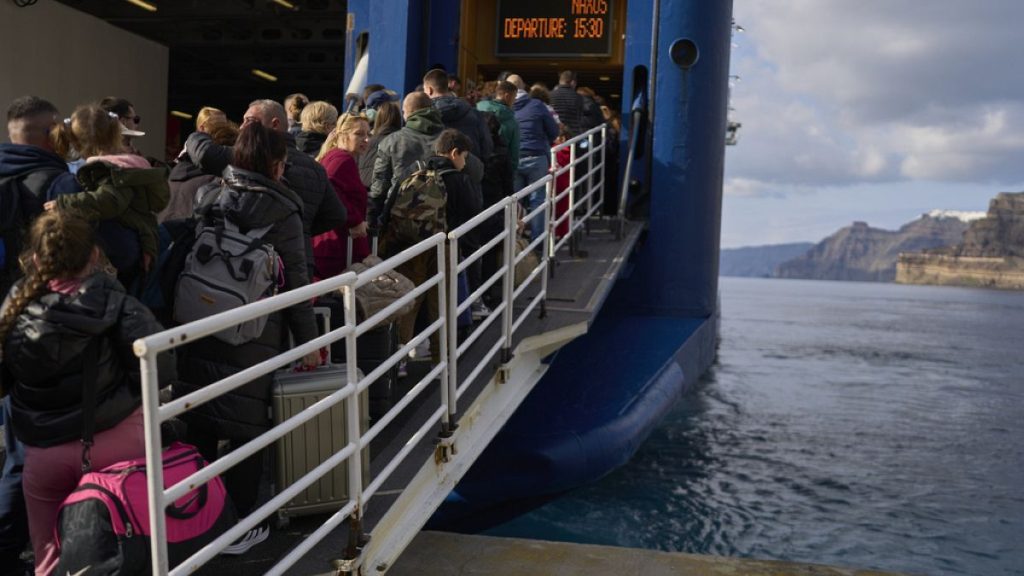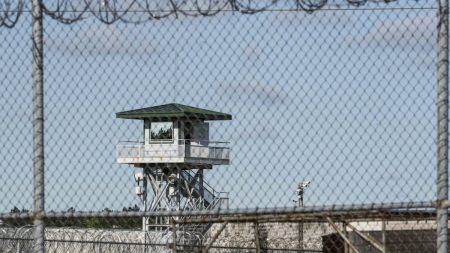The idyllic Greek island of Santorini, renowned for its breathtaking caldera views and whitewashed villages, experienced an unforeseen disruption as a surge in seismic activity triggered a wave of evacuations and emergency measures. Over 280 undersea earthquakes, many registering magnitudes exceeding 4.5, rattled the region between Santorini and the neighboring island of Amorgos over a three-day period, prompting authorities to take swift action to safeguard residents and tourists. While experts reassured the public that the tremors were not linked to Santorini’s volcano, the unusual pattern and frequency of the seismic events raised concerns about the potential for a significant earthquake.
The escalating seismic activity spurred a flurry of evacuations, with hundreds of tourists and locals scrambling to leave the island. Authorities mobilized additional flights between Santorini and Athens to accommodate the exodus, while ferries also transported people away from the island. The disruption extended to daily life on the island, with schools closed and access restricted to certain coastal areas, including the historic old port, due to the risk of rockfalls from the cliffs. Hotels were instructed to drain swimming pools as a precautionary measure to minimize potential damage to buildings in the event of a major earthquake.
The constant tremors, continuing throughout Sunday night and into Monday, created a palpable sense of anxiety among the island’s residents. The frequent jolts, occurring every 10 to 20 minutes, left many feeling uneasy and apprehensive. Local residents expressed their concerns, noting the unusual frequency and intensity of the tremors, which were unlike anything they had experienced before. While some attempted to maintain a sense of calm to avoid exacerbating panic, the underlying worry was evident throughout the community.
Greek Prime Minister Kyriakos Mitsotakis, while attending a meeting in Brussels, addressed the situation and urged islanders to remain calm and heed the instructions issued by the Civil Protection Authority. He acknowledged the significant nature of the geological phenomenon and emphasized the importance of following official guidance. The government’s response underscores the seriousness of the situation and the commitment to ensuring the safety of the island’s inhabitants.
Professor Efthymios Lekkas, head of Greece’s Earthquake Planning and Protection Organization, offered insights into the evolving situation, suggesting that it might take several weeks for the seismic activity to subside and for normalcy to return. He attributed the prolonged duration to the complex nature of the underlying geological processes at play. This assessment highlights the need for ongoing monitoring and preparedness as the situation continues to unfold.
Santorini, a major tourist destination attracting over three million visitors annually, relies heavily on its tourism industry. The influx of tourists, primarily arriving via ferries and cruise ships, contributes significantly to the island’s economy. The seismic activity and subsequent disruptions pose a challenge to this vital sector, as the evacuations and ongoing uncertainty may impact tourism in the short term. The island’s ability to recover and reassure visitors will be crucial to maintaining its reputation as a premier travel destination. The long-term effects of this seismic event on Santorini’s tourism industry remain to be seen, but the immediate impact is undeniable. The island’s authorities and residents will need to navigate this challenging period and work towards restoring confidence in the safety and stability of this iconic destination.










